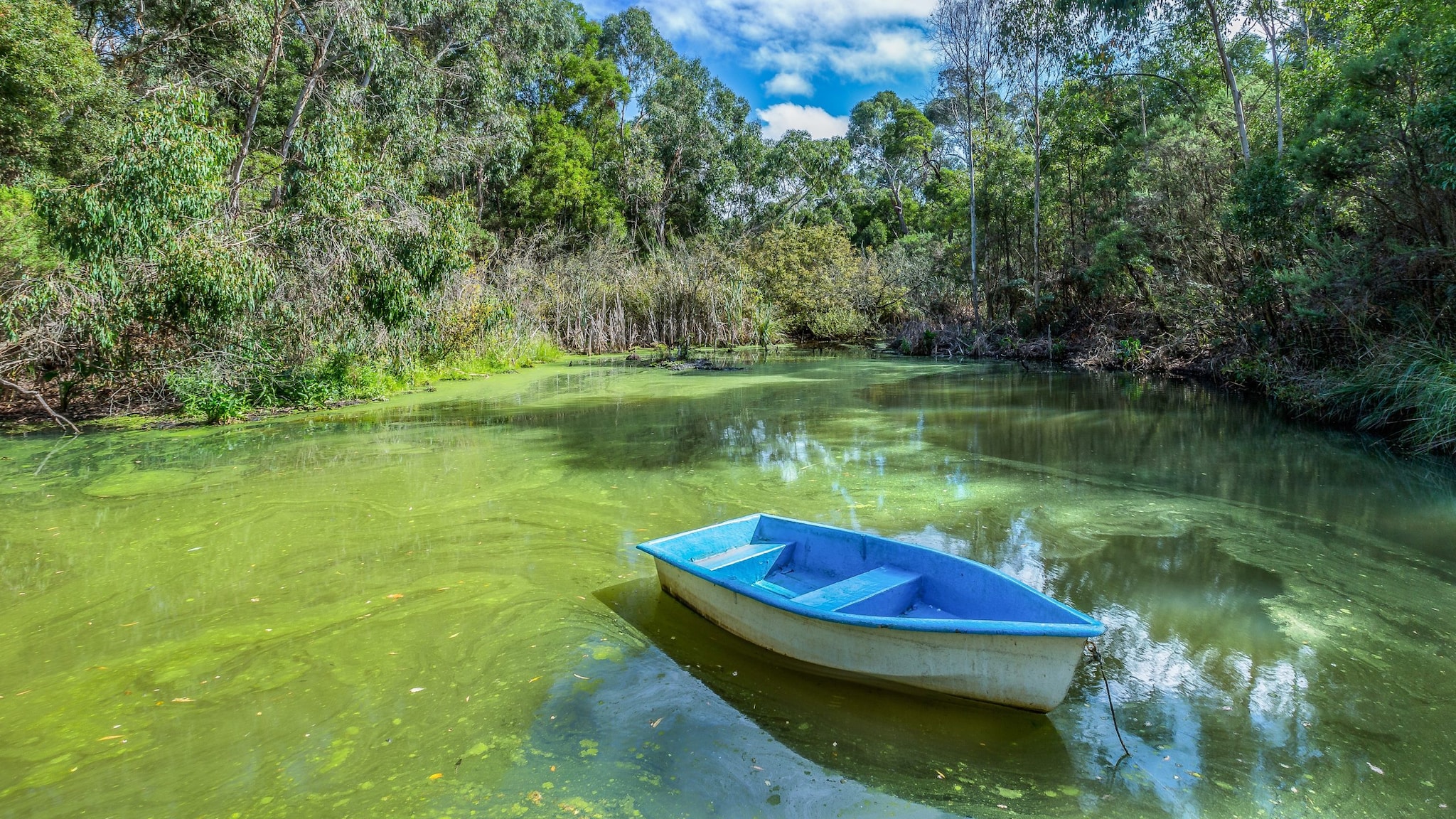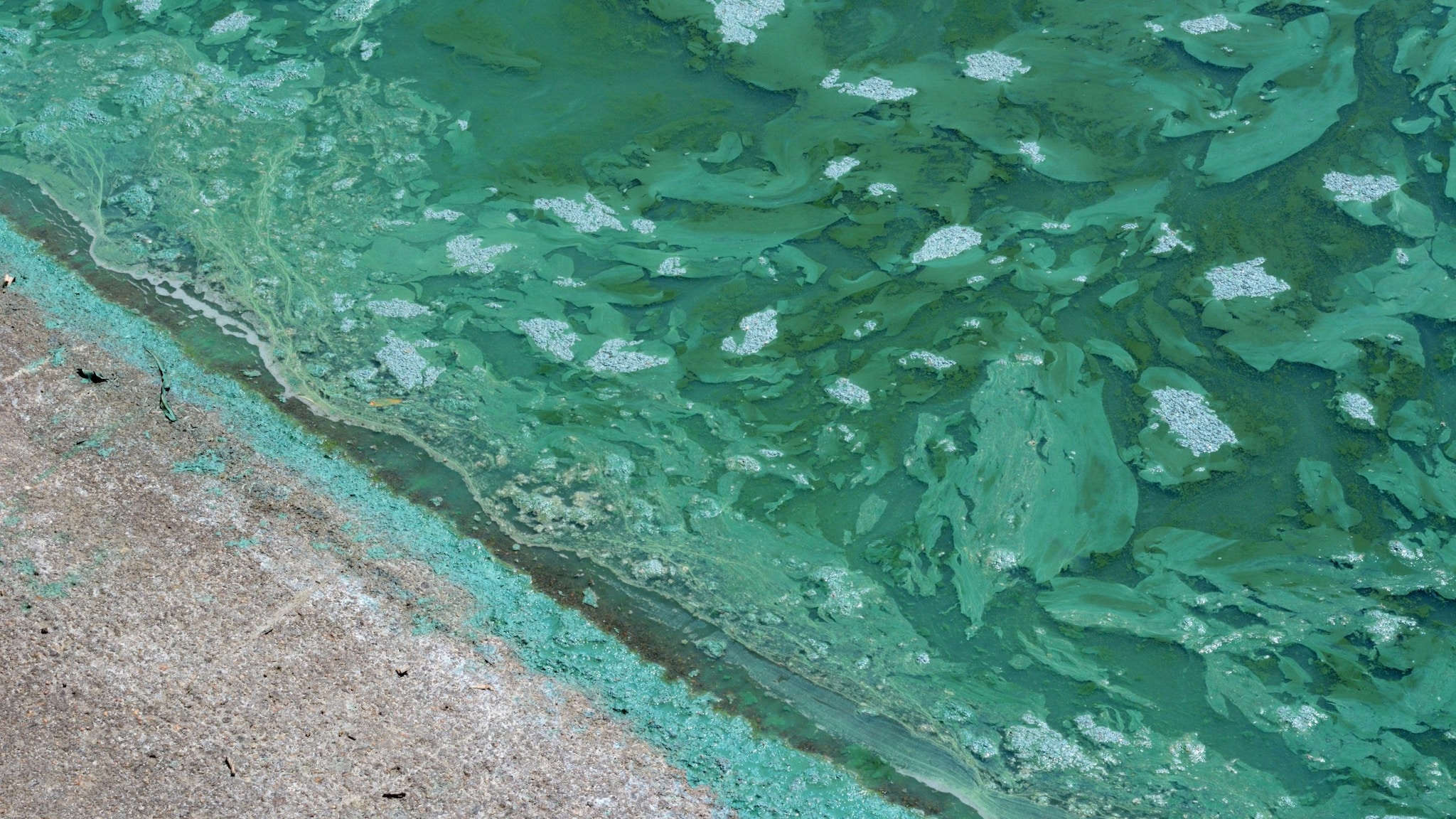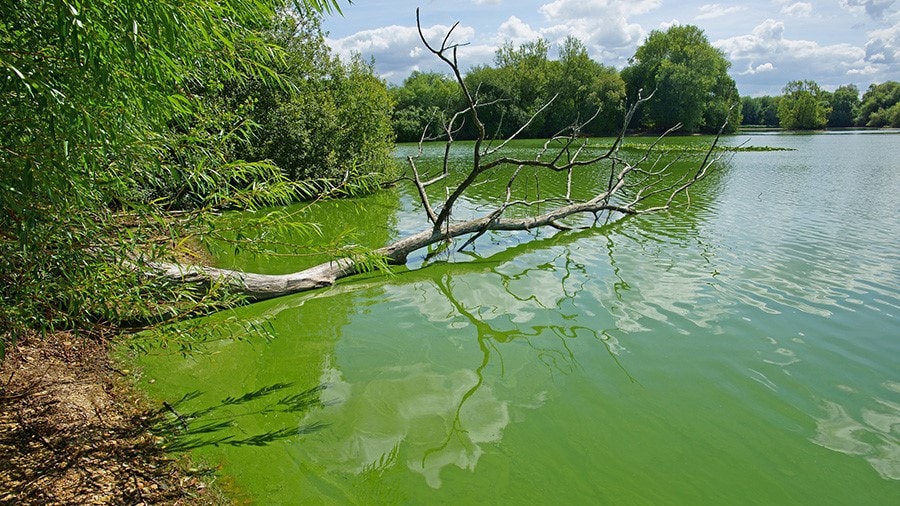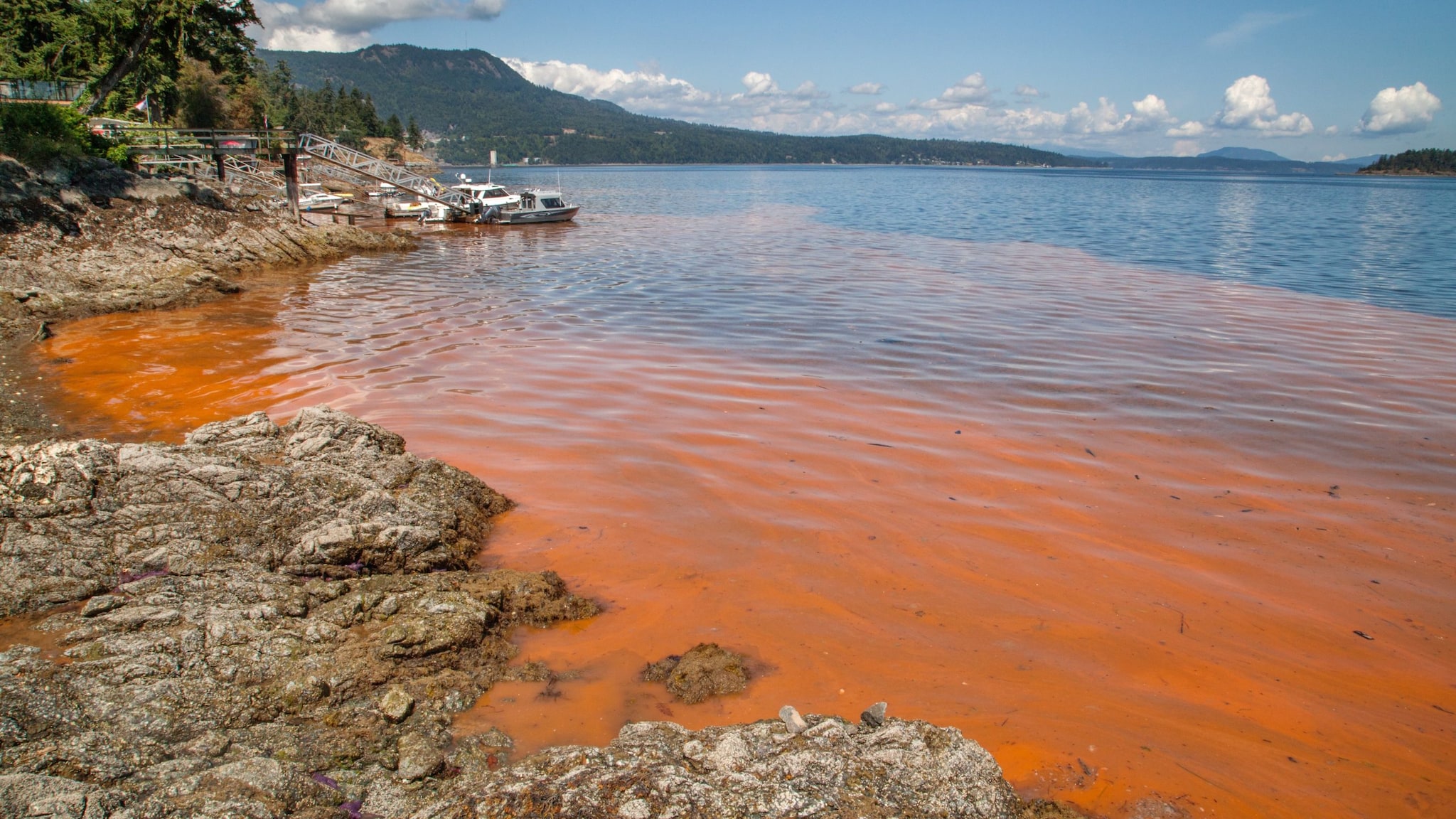Key points
- Harmful algal blooms are the rapid growth of algae or cyanobacteria in water that can harm people, animals, or the environment.
- Going in or near water with a harmful algal bloom can make you and your animals sick.
- Stay out if water looks discolored, has scum, or smells bad.

Overview
Algae and cyanobacteria (also called blue-green algae) are plant-like organisms that live in water. They can quickly grow out of control, or "bloom." Some of these blooms produce toxins (poisons) that make people and animals sick.
What they look like
Harmful algal blooms can look like foam, scum, mats, or paint on the surface of the water. They can also grow underneath the water, making some harmful algal blooms hard to see.

When they're harmful
Not all blooms are harmful. Blooms of algae or cyanobacteria can harm people, animals, or the environment if they:
- Make toxins
- Become too dense
- Use up oxygen in the water
- Release harmful gases
Types
Many different types of algae can cause harmful algal blooms. However, three types —cyanobacteria, dinoflagellates, and diatoms—cause most blooms that make people and animals sick.


Where they're found
Harmful algal blooms can grow in fresh water, salt water, or brackish water (a mixture of fresh and salt water). This includes water people use for recreation and for drinking.
Harmful algal blooms occur across the world. In the United States, they have been reported in all 50 states, Puerto Rico, and the U.S. Virgin Islands.
What causes them
Algae and cyanobacteria occur naturally in water. They are more likely to grow into a harmful algal bloom when water is:
- Warm
- Slow-moving
- Full of nutrients, such as nitrogen or phosphorous
Nutrients get into water when fertilizer, sewage, or runoff from cities and industrial buildings washes into lakes, rivers, or oceans. This can happen during rainstorms, for example.
Environmental changes, such as warmer water, might be making harmful algal blooms worse.
Learn more about factors that help harmful algal blooms grow.
Health impacts
Harmful algal blooms cause a variety of mild to serious illnesses. Symptoms depend on the type of harmful algal bloom you come in contact with and how you are exposed.
Harmful agal blooms can be deadly for animals
Risk of exposure
People and animals can get sick from having contact with water or food that contains certain types of algae, cyanobacteria, or their toxins.
You or your animals can get sick if you:
- Go in or near water contaminated by a harmful algal bloom
- Swallow contaminated water
- Eat contaminated shellfish or fish
- Use contaminated blue-green algae dietary supplements
Preventing exposure
You can take steps to avoid getting sick from harmful algal blooms. For example:
- Stay out of discolored, scummy, or smelly water and keep pets away.
- Check for and follow swimming, fishing, and shellfish advisories.
- Follow guidance from local officials if there is a harmful algal bloom in your drinking water supply.
After exposure
If you or your animal go in water with an algal bloom, rinse off with tap water right after.
If you think you have symptoms caused by a harmful algal bloom, contact a healthcare provider or the Poison Control hotline at 1-800-222-1222.
If your pets or livestock seem sick after going in or near water, contact a veterinarian right away. You can also call the ASPCA Animal Poison Control Center at 1-888-426-4435 or the Pet Poison Helpline at 1-855-764-7661. Note that there is a fee for these calls.
What CDC is doing
CDC works with federal, state, local, and territorial partners to reduce the health impact of harmful algal blooms. This includes:
- Public health research
- Tracking harmful algal blooms and illnesses
- Developing methods to detect toxins
- Outreach and education
- Providing health departments with financial and technical support
